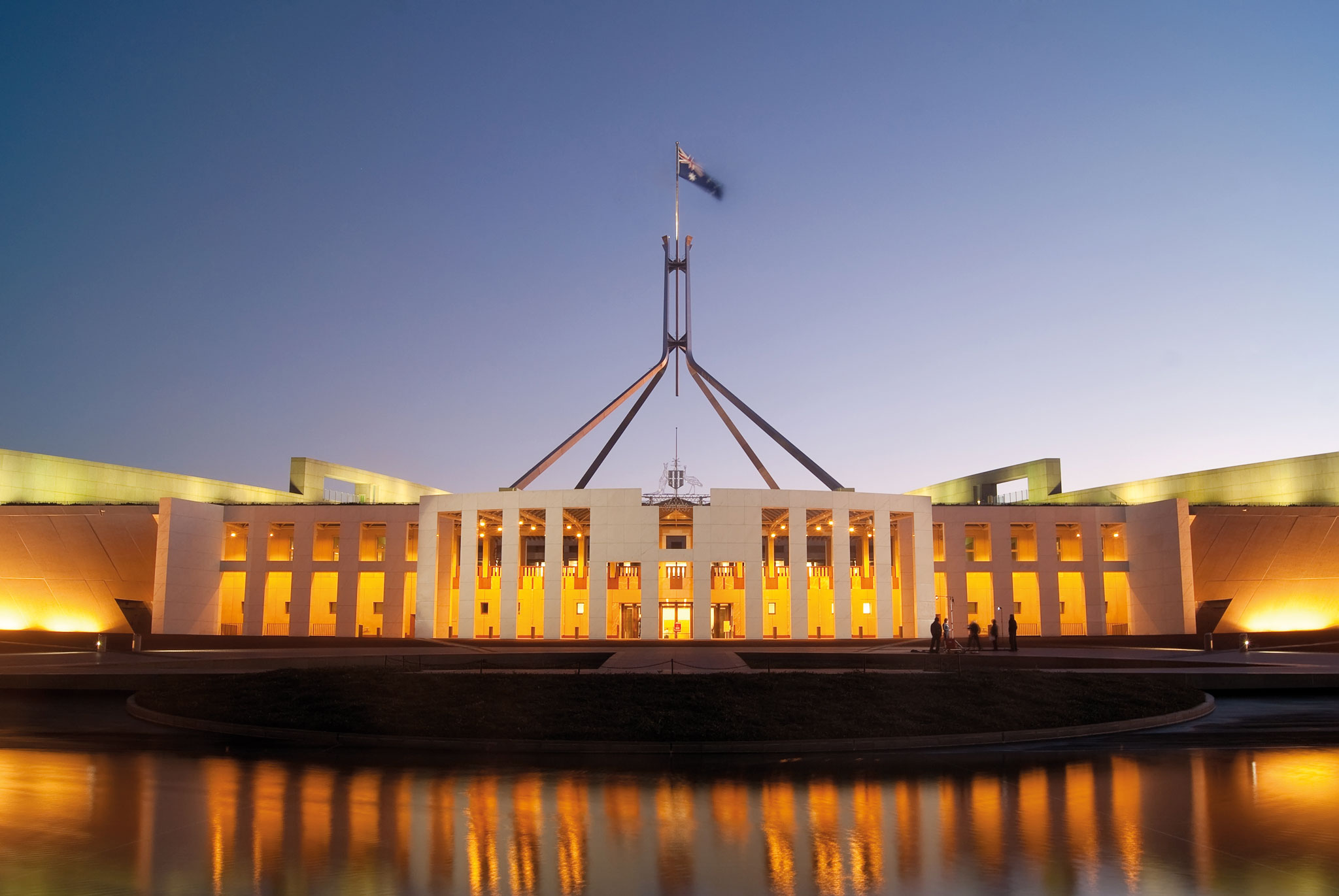Australia’s prosperity will continue to rely on the competitiveness of our economy and our ability to seize opportunities globally.
The economic transformation of our region will continue (Chapter 2). More people moving to Asia’s cities will help sustain demand for our minerals and energy. Asia’s middle classes will expand and demand premium agricultural products and a wide range of services, such as education, tourism, health care and finance. Hundreds of millions of Asian consumers are already shopping online for goods and services from around the world.
Established markets, such as those in North America, Europe and Japan, also remain important to Australia’s economy, particularly as investment partners, as export markets and as a gateway to global value chains. Economic reforms in Latin America offer new possibilities for trade and investment, as do growing populations and natural resource endowments in Africa and the Middle East.
At the same time, our policies will need to reflect the changing nature of trade driven by technology and shifts in the relative competitiveness of economies.
Lower communication and transport costs have enabled today’s global value chains, in which components of goods are produced in different countries before being assembled for sale. Value chains blur the distinction between exports and imports. Goods often cross borders many times before they find their way into final products.
Technological advances will drive further change. E-commerce provides new ways to access markets and consumers. The digital economy, and the rules that govern it, is increasingly essential to Australian companies. The tasks that go into providing some services are being broken up and performed by firms in different countries in much the same way goods are produced in value chains.
Lower-cost robotics and technologies such as additive manufacturing are increasing opportunities for companies based in higher-wage economies, including our own.
How global manufacturing and global value chains evolve will have major implications for trade and investment. Given its central role in manufacturing, changes in China’s economy will be influential. As its economy becomes more advanced, production of many goods could be centralised in China. Conversely, higher costs in China might see companies shift production to other countries to seek competitive advantages.
Global developments in energy technology and consumption will influence demand for major Australian exports like iron ore, coal and LNG. The increasing use of high efficiency, low-emission coal technologies, cleaner gas plants and advances in renewable energy and carbon capture and storage technologies will create export and investment opportunities for Australia. Even so, global energy markets are becoming more competitive, including because of the exploitation of unconventional energy reserves in the United States, and more responsive to changing demand.
Figure 4.1 Australia’s trade in goods and services (2016)

Source: Australian Bureau of Statistics
*Excludes education
Figure 4.1 Australia’s trade in goods and services (2016) image description: This infographic, titled, Australia's trade in goods and services (2016), illustrates Australia's top 5 imports and countries of origin, and Australia's top 5 exports and destinations. The top import, at $3.7 billion, is personal travel (excluding education) and China is the top source of imports, at $62 billion. The top export is iron ore, at $54 billion, with China the top export destination, totalling $94 billion. The number five import is freight, at $9 billion and Germany is the fifth largest import source, at $16 billion. The number five export is natural gas, at $18 billion, while the number five export destination is the United Kingdom at $15 billion.
The task for Australia is to maximise opportunity in this dynamic environment. While we have many advantages, including the complementary nature of our economy with that of many Asian countries, there will also be challenges to navigate.
Australia will more than ever need a competitive economy with efficient businesses and industries and a skilled workforce. Our companies will need to be agile and adaptable to benefit from changes in the way goods and services are produced and traded. Australian direct investment into Asia is relatively low, potentially affecting the ability of some firms to tap into growth markets and value chains. Efforts to facilitate our companies’ access to regional value chains will be necessary to maximise the benefits of our region’s economic growth.
The continuing openness of the world economy will be vital to our interests. Any serious turn towards protectionism would weaken rules that enable stable and predictable international trade, which in turn supports economic growth, job creation and improvements in living standards. Even narrow protectionist measures could limit or disadvantage our exports and harm Australia’s economy.
In responding to this changing environment, the Government will:
- resist protectionism and advocate for an open global economy
- work determinedly with partners and in global institutions to protect and shape rules that promote economic growth, trade liberalisation and free markets
- ensure the lowest possible barriers to our trade and investment, including through modern free trade agreements, and
- work with Australian businesses to advance our commercial interests in overseas markets.
This international agenda will be built on domestic policies that increase the competitiveness and resilience of our economy and that ensure Australia maximises the gains from economic openness (Chapter 1).
The Government will maintain a strongly consultative approach before, during and after trade negotiations. We will continue to seek stakeholder input to our negotiations and policy development. We will make it easier for business and individuals to access information on trade negotiations, including by upgrading our FTA portal for business enquiries.
Figure 4.2 Australia’s exports by type
| Total services | Other goods | Manufactures | Minerals, fuels, non-monetary gold | Rural goods | |
|---|---|---|---|---|---|
| 1980 | 3 | 2 | 4 | 6 | 8 |
| 1981 | 4 | 2 | 4 | 7 | 7 |
| 1982 | 4 | 1 | 4 | 8 | 8 |
| 1983 | 5 | 1 | 5 | 9 | 7 |
| 1984 | 5 | 1 | 5 | 10 | 9 |
| 1985 | 6 | 2 | 6 | 14 | 11 |
| 1986 | 7 | 2 | 7 | 13 | 12 |
| 1987 | 9 | 2 | 9 | 14 | 14 |
| 1988 | 11 | 3 | 10 | 15 | 15 |
| 1989 | 11 | 3 | 12 | 17 | 15 |
| 1990 | 13 | 3 | 13 | 22 | 13 |
| 1991 | 14 | 3 | 15 | 23 | 14 |
| 1992 | 16 | 3 | 16 | 24 | 15 |
| 1993 | 19 | 4 | 19 | 24 | 16 |
| 1994 | 20 | 4 | 20 | 23 | 18 |
| 1995 | 23 | 4 | 24 | 26 | 18 |
| 1996 | 25 | 5 | 25 | 27 | 20 |
| 1997 | 26 | 5 | 28 | 32 | 23 |
| 1998 | 27 | 5 | 28 | 34 | 22 |
| 1999 | 29 | 5 | 29 | 30 | 22 |
| 2000 | 35 | 7 | 35 | 42 | 26 |
| 2001 | 35 | 8 | 38 | 47 | 30 |
| 2002 | 37 | 8 | 37 | 45 | 29 |
| 2003 | 38 | 10 | 33 | 43 | 22 |
| 2004 | 39 | 11 | 34 | 46 | 27 |
| 2005 | 42 | 13 | 37 | 66 | 25 |
| 2006 | 47 | 15 | 42 | 82 | 26 |
| 2007 | 52 | 16 | 45 | 85 | 24 |
| 2008 | 58 | 14 | 47 | 135 | 28 |
| 2009 | 57 | 13 | 39 | 118 | 27 |
| 2010 | 57 | 14 | 40 | 150 | 27 |
| 2011 | 56 | 13 | 42 | 174 | 34 |
| 2012 | 57 | 13 | 40 | 162 | 35 |
| 2013 | 60 | 12 | 41 | 172 | 38 |
| 2014 | 65 | 12 | 43 | 171 | 41 |
| 2015 | 73 | 12 | 45 | 149 | 45 |
| 2016 | 78 | 12 | 44 | 161 | 43 |
Australian Bureau of Statistics














